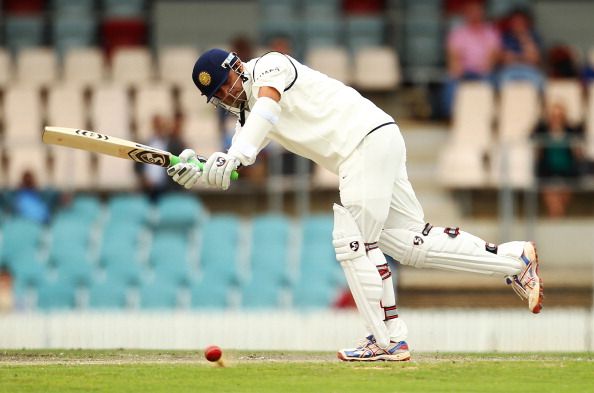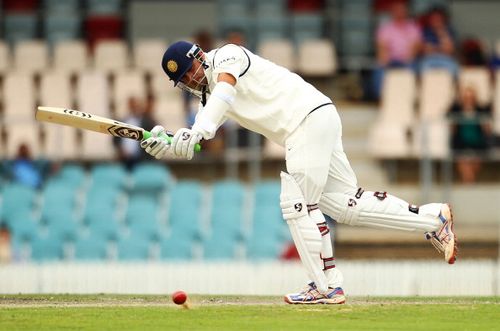
Eight reasons why India failed against England
India has lost two back-to-back test matches at home for the first time in six years, to a team known to be fragile against spin and turning tracks. It’s time they learn from their mistakes and get back to the basics. Here are eight possible reasons on their loss to England:
1. Lack of Partnerships:
Cricket is all about building partnerships, even the shortest of formats (T20) need a good partnership to win matches. By this we can understand the importance of partnerships in Test cricket. Building partnerships increases confidence in the batsmen to follow and decreases the confidence by increasing the pressure in the opposition camp. Except for the first test where India won, there were no match-winning partnerships. In both the second and third test matches, India lost due to a lack of even a single good partnership while England kept building partnerships and pressurising the Indian bowlers.
2. Missing “The Wall”:
Is there anyone who cannot identify “The Wall”? Yes, you’re correct, he is none other than great Indian batsman, Rahul Dravid. We cannot expect a batsman to play for ever; I know that. India is missing Rahul Dravid’s qualities as a batsman, especially his patience. He is known as “The Wall” because of his patience and that patience has been the main reason for India’s success for the past few years. England’s Alastair Cook seems to have taken a leaf out of Dravid’s book when it comes to patience, gradually scoring big.

3. Lack of an Anchor:
Sachin, Dravid and Laxman, three players who used to play anchor roles in partnerships by not letting the other players give away their wicket after spending some time at the crease and make sure the team reaches a good position. With Dravid and Laxman retired and Sachin not being in greatest of form, this slot is left empty. So many batsman got off to a good start but were not able to convert them into big ones while Cook played the anchor role very well and assured success for his team.
4. Lack of Experience:
In 2008, the Indian cricket team’s batting is the best in the world with Sachin, Dravid, Laxman and Ganguly in the middle order. The other three had taken the burden on them when Ganguly retired from Test cricket and carried the Indian team forward but now with the other two Indian legends retired, the Indian middle order seems very fragile with a lot of young blood. We cannot expect any anyone to play all his life; this phase is common for any team. It’s just that the Indian youngsters were not able to reach the expectations with loads of pressure on their young shoulders.
5. Dependent on Home Advantage:
As India lost 8 Test matches early in the year, everyone wanted them to take revenge on the series loss against England. As England is considered very weak against playing spin, the BCCI want the tracks to turn. The Indians having taking everything for granted felt complacent. The English on the other hand, worked hard to overcome their phobia by being patient and making the bowlers toil.
6. Bowlers not being up to the mark:
There was a debate from the beginning of the series on the quality of Indian spinners. To be frank, the Indian bowlers were not as effective as they used to be in the times of Anil Kumble and Harbhajan (when he’s was in form). Ohja bowled very well and is currently the best bowler of the Indian team. As for Ashwin, he is very good at the beginning of the innings but when he gets hit for runs, he stars to bowl flat and fast, which makes the English batsmen play easily. Cook played a significant role by playing spin effectively as he mixed aggression and patience very well. The sad part about the Indian attack is that Zaheer is considered one of the best when it comes to reverse swing but he was not at all efficient in the third test. While Anderson picked three wickets, Zaheer took only 1 wicket.
7. Fielding Lapses:
Test matches are all about catches in slip cordon and this Indian test team is not only one of the youngest and most athletic, ir is also one of the the finest fielding teams of we have ever had. As two specialist fielders of slip cordon, Laxman and Dravid who were the all time best in terms of slip catching retired, youngsters have taken the place and have missed quite a few opportunities. A perfect example: Pujara’s dropping Cook early in the innings; he went on to score 190.

8. Extraordinary batting by Cook:
England skipper Cook led his team from the front by becoming the youngest batsmen to score 7000 runs. He played spin bowling very efficiently, which relieved the middle order of pressure. His innings was a masterpiece and considered one of the best, as it was played on the tracks unfamiliar to him. The way he played against Indian spin bowling was outstanding. The temperament he has shown and his hunger to score runs made me a big fan. And the best part, the pace at which he scores runs and the consistency of it all are par none. The Indian batsmen should learn from Cook on how to convert their starts to big scores.